Ornamental plants in gardens are susceptible to various insects and diseases. Gardeners and gardeners use various methods of protection against pests. One of the methods is whitewashing of trees in autumn, the composition of the components may be different. Let us consider in more detail how to carry out such actions in practice.
Material Content:
The need for whitewashing trees in autumn
Cracks appear in the bark of trees over time. This secluded place is chosen for wintering by various insects. It can be aphids, ticks, bark beetles. Carrying out autumn whitewashing, we deprive these pests of winter apartments.
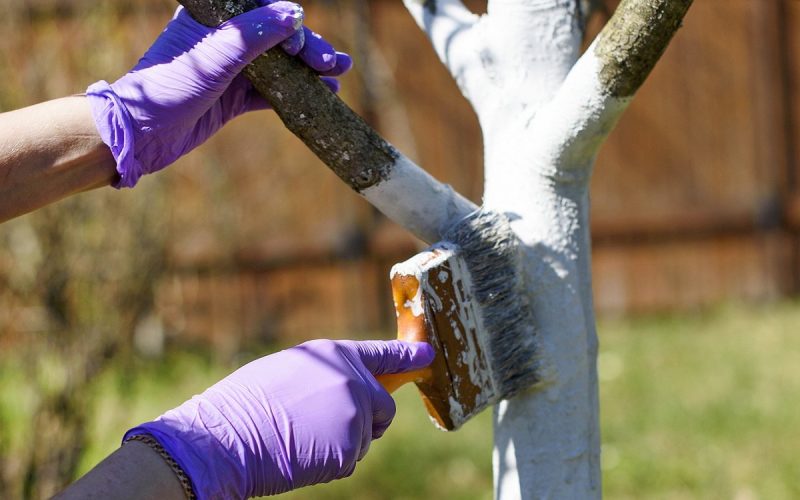
The second reason for this procedure is to protect the bark from sunburn. Trees can get burns at any time of the year. But in winter, when the trunks do not protect deciduous crowns, this is especially true. Frequent thaws contribute to this. Fruit trees are especially affected by burns.
It is especially necessary to whiten young trees. Their tender bark may crack from the sun and frost. Hares and mice also will not miss such a treat.
Deadline for autumn whitewash

Timing of whitewashing of trees depends on the ambient temperature. They begin to whiten in October or November. This should be done before the onset of frost. A signal to start work will be the end of leaf fall. Late dry and sunny autumn is a good time. Rains will not wash off the coating, it will dry out slowly.
Equipment for whitewashing trees
For this purpose, you can use the simplest inventory - a bucket and a brush. A suitable solution is diluted in the bucket, and a brush is needed to apply it.A soft brush is chosen to penetrate the narrowest and most inaccessible places. It is better to take a flat brush with artificial pile. For economical use of whitewash, its width is chosen no more than the thickness of the tree.
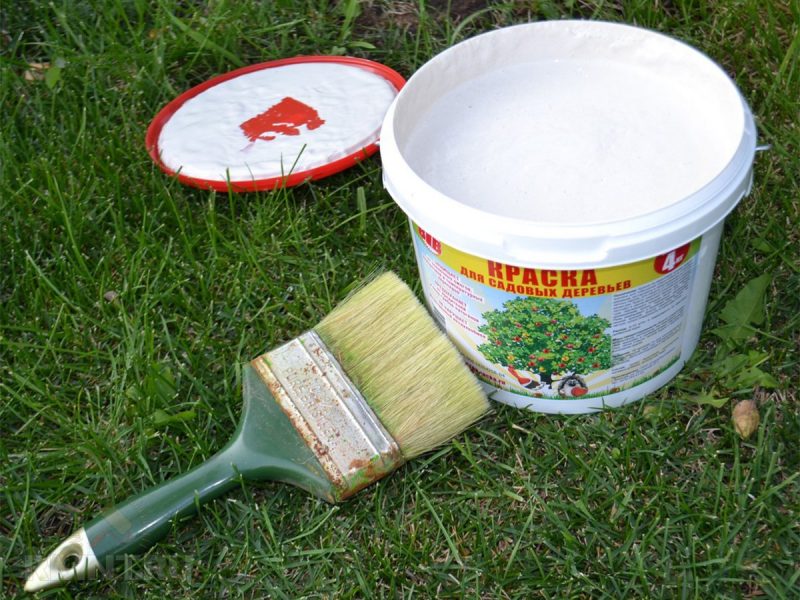
In order to quickly whiten the trees, without any problems to reach the highest points, use a spray gun. Convenience in this case will result in excess fluid flow. But if you have a large garden, this decision will be correct.
Preparing a tree trunk for whitewashing
Before you start whitening, you should carefully prepare the trunk for this procedure. All unnecessary formations are removed from its surface - mosses, lichens, and lagging bark. All this is cleaned on a bedding film or other bedding.
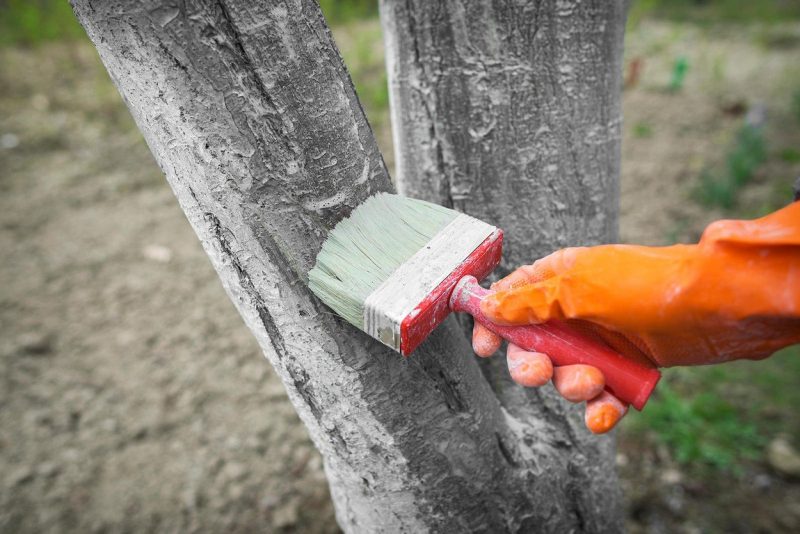
These actions are best performed in wet weather. At this time, the swollen damaged bark and other formations are easily scraped off with a wooden scraper. Sharp metal objects are not suitable for such work, so you can damage the living bark.
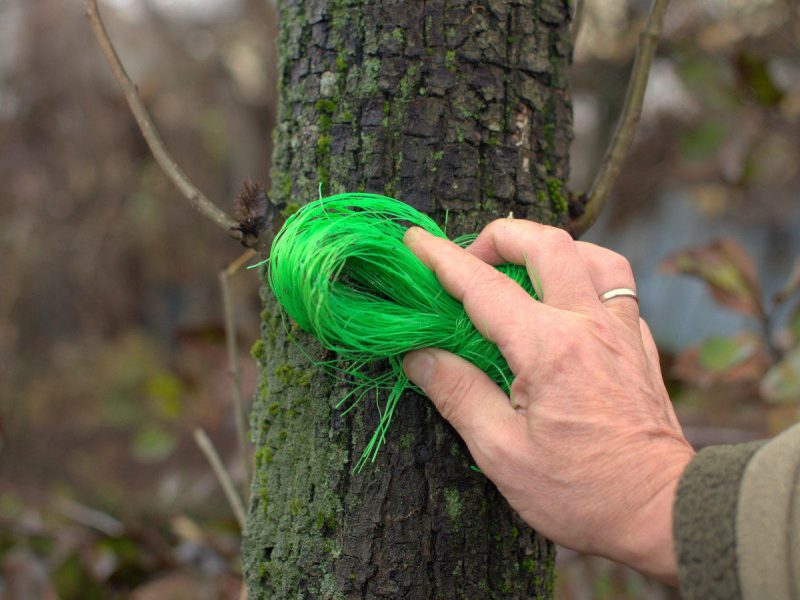
All cleaned garbage should be burned immediately to avoid contamination of healthy plants.
Cracks formed in the crust are closed with garden var.
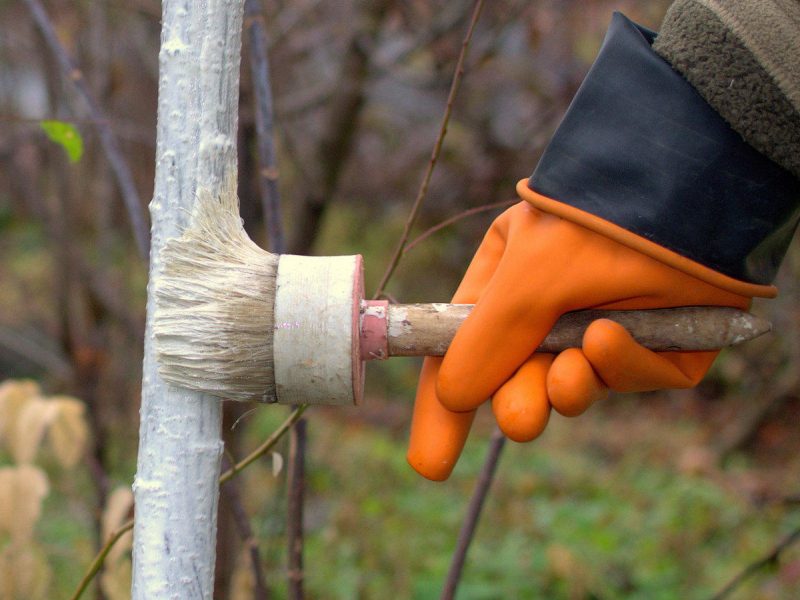
If this is not available, use putty:
- Clay - 2 parts.
- Manure - 1 part.
- Copper sulfate - 1 g.
Further action is the disinfection of the barrel surface. You can use such a solution - 1 kg of table salt, 2 kg of wood ash, 2 pieces of laundry soap. All components are dissolved in a bucket of warm water. They washed the trunk, not allowing salt water to penetrate into the soil.
A good effect is shown by the use of a 5% solution of copper sulfate, HOM preparations, Oxy-Hom, Bordeaux fluid. These solutions are sprayed from a fine atomizer, creating a useful mist around the barrel.
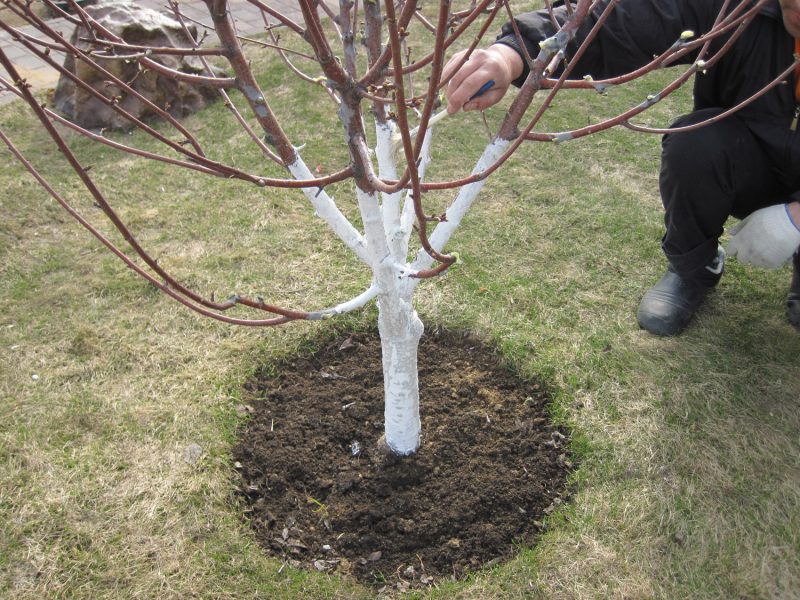
Copper containing preparations should not be used annually. This mineral has the ability to accumulate in the tissues, which leads to weakness and disease of the plant.
Instead of fungicides, a composition of soap and ash is used.
For it, the proportions are used:
- 3 kg of ash.
- 50 g of ground soap.
The ingredients are dissolved in 10 liters of hot water. When it cools down, they wash the tree bark. Once in the soil, this mixture will serve as fertilizer.
The composition of the solution for different types of trees
The most common compositions for whitewashing trees include lime and copper sulfate.
Chalk or lime must be contained in such formulations. They provide whiteness to whitewashing.
Copper or iron sulfate has a disinfecting property. Glue must be present.

The simplest whitewash recipe for fruit trees:
- Slaked lime - 2 kg.
- Copper sulfate - 400 g.
- Casein glue - 100 g.
- Water - 10 l.
The presence of glue allows the composition to not be washed off for a long time from the surface.
There is currently no need to prepare such mixtures. There are special paints for whitewashing. Water-based paint is not dangerous, it does not wash off for a long time. It protects the trunks from sunburn, does not cause decay and diaper rash.
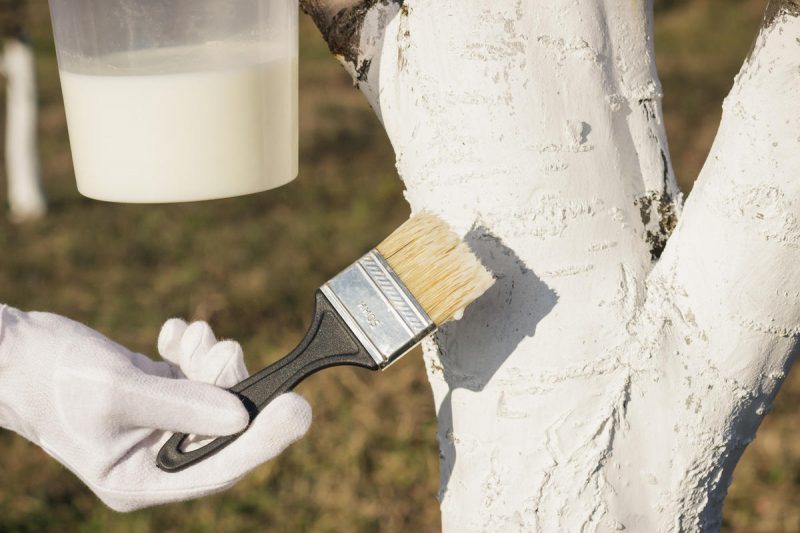
Water-dispersed paint contains an antiseptic component, sunscreen pigments, stays on the trunk for a long time.
You can prepare a simple reliable composition of PVA glue with the addition of dye - chalk or kaolin. Adding water, we get a quality whitewash.
How to whitewash trees
This work should be treated with responsibility. Work without haste, staining each piece of bark, soaking it with a solution. Whitewashing begins from below, gradually rising along the trunk to the top.
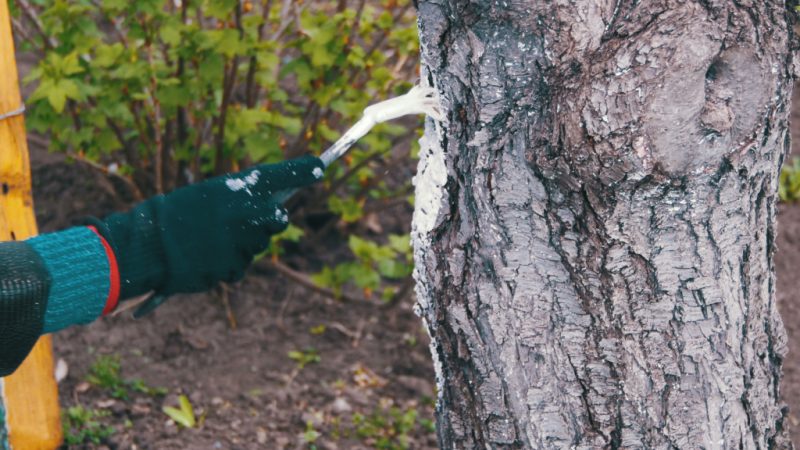
Try not to leave large drops of whitewash. Drying, they just fall off. It is necessary to whiten the entire trunk and skeletal branches to a height of 30 cm. Do not make the whitewash solution very thick, the thick layer will crumble, the work will have to be repeated.
Starting to whiten young trees, make the concentration of lime mortar weaker by half. Aqueous emulsion and water-dispersed compounds are not dangerous to them.
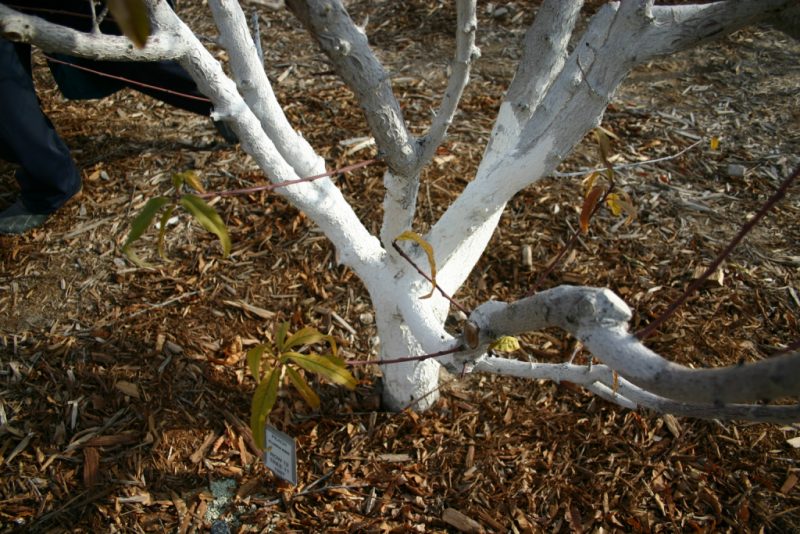
Whitewashing of fruit trees must also be done in the spring. This will reduce the number of pests and diseases in these crops.
By taking care of the trees in your garden, you make it beautiful and healthy. Green spaces are the lungs of nature, they need to be protected. The neatly whitewashed trunks show that they are taken care of.
There is an opinion that whitewashing is unnecessary work, it does not protect the plant from harmful effects. However, the experience of gardeners who get positive results from these actions should not be neglected.












